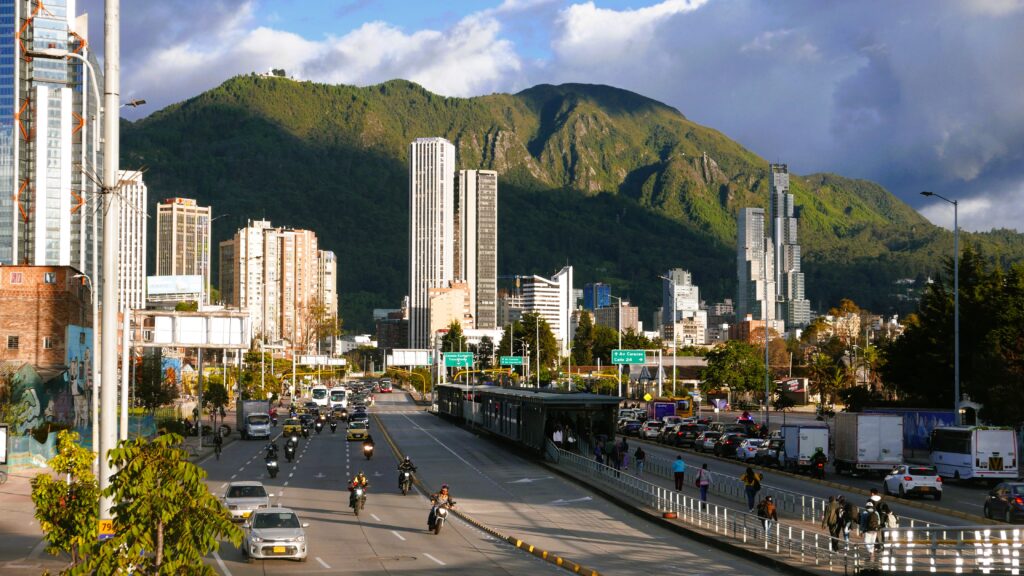Colombia’s capital is contender in global prize for curbing smog.

Take a deep breath – Bogotá is a finalist in the prestigious Earthshot Prize in the “Clean Our Air” category for cities battling pollution, with the Andean capital cutting pollution by 24% since 2018 even as the city has expanded.
“Bogotá has long struggled from pollution from diesel buses, trucks and dust from unpaved roads,” said Earthshot presenters announcing the 75 finalists from around the world.
Other factors affecting breathability are its altitude (Bogotá sits at 2,450 meters, or 8,000 feet) and the surrounding mountains which trap pollution in the city.
Key to reducing smog has been replacing smokey buses with one of the world’s largest electric bus fleets, introducing private car restrictions, and expanding cycling routes, according to Earthshot.
Bogotá will compete against Gujarat in India and Guangha in China, which have also improved air quality in recent years.
In announcing the finalists, Earthshot said that in 40% of cities around the globe pollution levels are seven times higher than WHO’s recommended safe standards, so replicating lessons learned in cities like Bogotá could improve air quality for millions around the world.
A long journey
Mayor Carlos Galán welcomed Bogotá’s chance at winning its category, which could bring a reward of US$ 1,340,000, predicting that “by 2028, we expect to avoid more than 300,000 tons of CO₂ per year—the equivalent of preserving a forest ten times the size of Manhattan or removing 65,000 cars from the road”.
Bringing cleaner air to Bogotá had been “a long journey”, said Galán, crediting the implementation of 1,480 electric buses and 667 kilometers (415 miles) of dedicated cycle lanes.
Future initiatives are the planned electric Metro lines, the first one slated for completion in 2028, additional cable cars for hillside communities, and a massive fleet of 10,000 electric buses within a decade.
World pollution rankings also point to imrpovements in the Colombian capital. Compared to other world capital’s, Bogotá scored 48th out of 121 cities listed in the 2024 Capital City Rankings, above Warsaw but below Budapest. Among South American countries, Colombia was bettered by Buenos Aires, Quito and Montevideo.
At national level, Bogotá scores consistently better than Medellin and the Valle de Aburra conurbations, though still exceeds WHO recommended limits by more than twice: there is work to be done.

Not all plain sailing
Whilst looking at air quality, the Earthshot Prize, which is backed by the UK’s Prince William, did not consider negative impacts of city social policy such as the restrictive ‘Pico y Placa’ car scheme which removes approximately 40% of private cars from the road each weekday, or controversial laws to allow powerful electric motorbikes to use bikes lanes, as reported in The Bogotá Post.
Getting around the capital is not all plain sailing. The Transmilenio buses, even when electric, are often overcrowded and plagued by crime, and stations are frequently the target of blockades and vandalism.
And the city consistently ranks among the world’s worst for traffic congestion. In 2023 a Tom Tom survey estimated that Bogotá drivers lost an average of 244 hours a year stuck in traffic.
Still, the good news is that for those of us cycling or walking – often the most efficient way to get around the city – we can breathe a bit better, and Bogotá’s efforts are being recognised at a global level.
The successful candidate for the Earthshot Prize will be announced on November 5 in Rio de Janeiro, Brazil.







